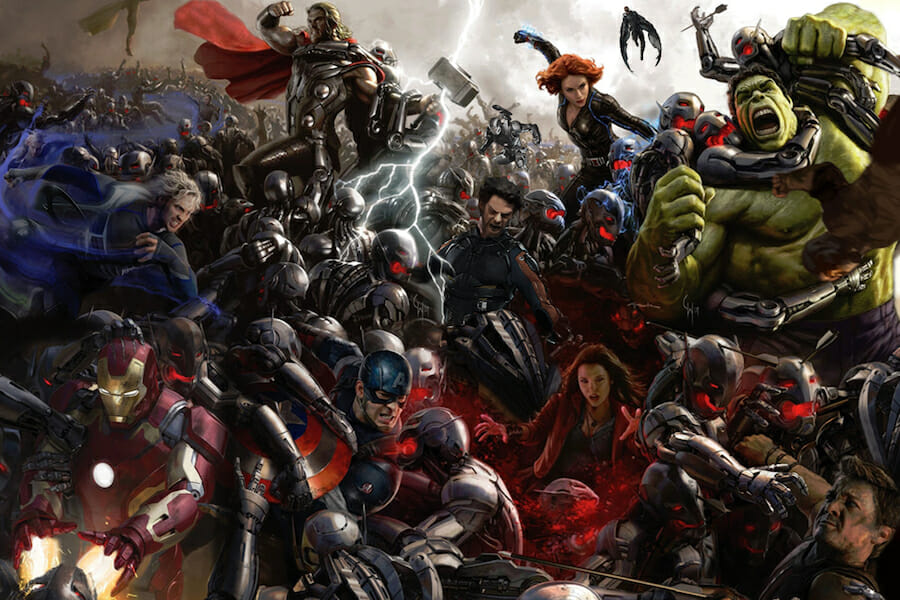
Patrick Doyle: Marvel’s Mightiest Film Composer
The highest-selling Hollywood feature film franchises typically produce unique, powerful orchestral motifs. Many are simple enough for a child to learn and love.
Long-running franchises often return to the same composer for thematic continuity. The Star Wars films boast composer John Williams’s triumphant romanticism. Composer Jerry Goldsmith wrote a questing, enduring Star Trek feature film theme. Howard Shore is composer-in-chief for the Lord of the Rings film franchise, the musical architect of Middle Earth.
What unites these disparate franchises is their fealty to the tradition of establishing musical identities for heroes, villains, lovers, and forces supernatural. Words, pictures, and music work together in spectacular unison.
Yet, after almost a dozen films, the Marvel Cinematic Universe (MCU) has only produced a single classic score, full of lively themes: Patrick Doyle’s Thor (2011).
Strong fanfares—a tradition going back to John Williams’s Superman (1978) score—are lacking for the individual heroes in the MCU. When the films do produce a distinct theme for the hero, it often suffers from underdevelopment and disconnection from the rest of the score.
Fragmentation is a key failing. There may be strong cues in a film but they lack connective tissue between them.
Iron Man (2008) began the MCU on poor musical footing. The film features a theme for the building of the Mark I suit as well as a flying theme for the Mark II suit. But Tony Stark/Iron Man himself never receives significant thematic development. And there is no continuity between the different action cues. Iron Man 2 (2010) states a brief heroic theme in the “Mayhem in Monaco” cue on album, but it never returns. Iron Man 3 (2013) establishes a memorable fanfare for the hero, but never develops or modulates it until the end titles, when the theme returns as a rock boogie. And the rest of the score is largely anonymous.
Veteran composer Alan Silvestri’s score for Captain America: The First Avenger (2011) added a robust heroic musical identity to the MCU.
Silvestri recalls meeting with director Joe Johnston to discuss the score: “And he actually said the ‘theme’ word in our first and only meeting. That’s something I have a great fondness for me. To have some kind of musical signature either for a character or some aspect of the film, truly holds the score together. A theme makes the music feel like one piece in a sense.”
The Captain America march is vintage Silvestri fanfare: noble, muscular, romantic. The “Captain America ‘We Did It’”cue slows the fanfare and announces it on French horn, austere and stately. The “Training the Supersoldier” cue recalls Predator-era Silvestri brass tactics, but softer and happier and tuned to World War II nostalgic sensibilities.

Silvestri explains the importance of brass in scoring the MCU: “There’s a kind of grandeur that comes with the brass. There are also some very simple logistical and sonic reasons. In a film, everybody is fighting for real estate sonically. You have to have the dialogue clear and intelligible. And sound effects have a huge presence in action films in order to create a sense of reality. So you have to find a sound that will live in this sonic environment, which brass often allows. Take for instance the middle of Captain America’s motorcycle chase, when engines are screaming and there’s all kinds of gunfire. Brass is something that can complete sonically and give the music some kind of presence where it might not have any.”
The rest of the score for Captain America, however, fails to tell such a clear narrative.
The latest Marvel film score, Tyler Bates’s Guardians of the Galaxy (2014), never expresses an original, uplifting musical identity for its fearsome and furry heroes. Given the Guardians’ quirks and their love of adventure, this is surprising.
Composer Patrick Doyle’s score for Thor, of all the MCU music, aims truest for thematic strength and unity. The individual music-pictures in each cue fit into one grand mural of Asgard: golden, royal, and magical. The music accords with the pseudo-Shakespearean dialogue. There are momentous hammerfalls and moments of misery and nostalgia. The violin and the trumpet showcase brilliantly.
The first notable cue on album, “Prologue,” introduces a strings motif that could be for the kingdom of Asgard—five descending notes of tranquility.
“Sons of Odin” is the richest theme in the score, a regal and merry march. Strings open the track with warmth and brightness, tracing out a clear melody. Drums and other percussion enter, grooving and swinging along—ideal heraldry for a headstrong prince.
For sheer volume and force, “Thor Kills the Destroyer” leads the score. Replenished with godly power, Thor smashes the “Destroyer,” a metal minion thug, with a few swats of the hammer.
Other cues demonstrate Patrick Doyle’s mastery of delicate drama. “Banishment,” an intense violin piece, narrates Thor’s exile Asgard by Odin’s hand. “Science and Magic” spotlights a moment of intimacy between Thor and Jane. “Can you See Jane?” features a poignant cello solo that speaks to Thor’s yearning for love.
Remarkably, Thor: The Dark World (2013), composed by Brian Tyler, discarded Doyle’s vibrant themes.
The MCU is still young; this week’s press conference attests to years of creativity to come. In time, Marvel can and should develop bolder themes for its individual heroes. It should establish some thematic continuity between films.
The right film music can draw the portrait of a Marvel hero just as ably as Jack Kirby.

